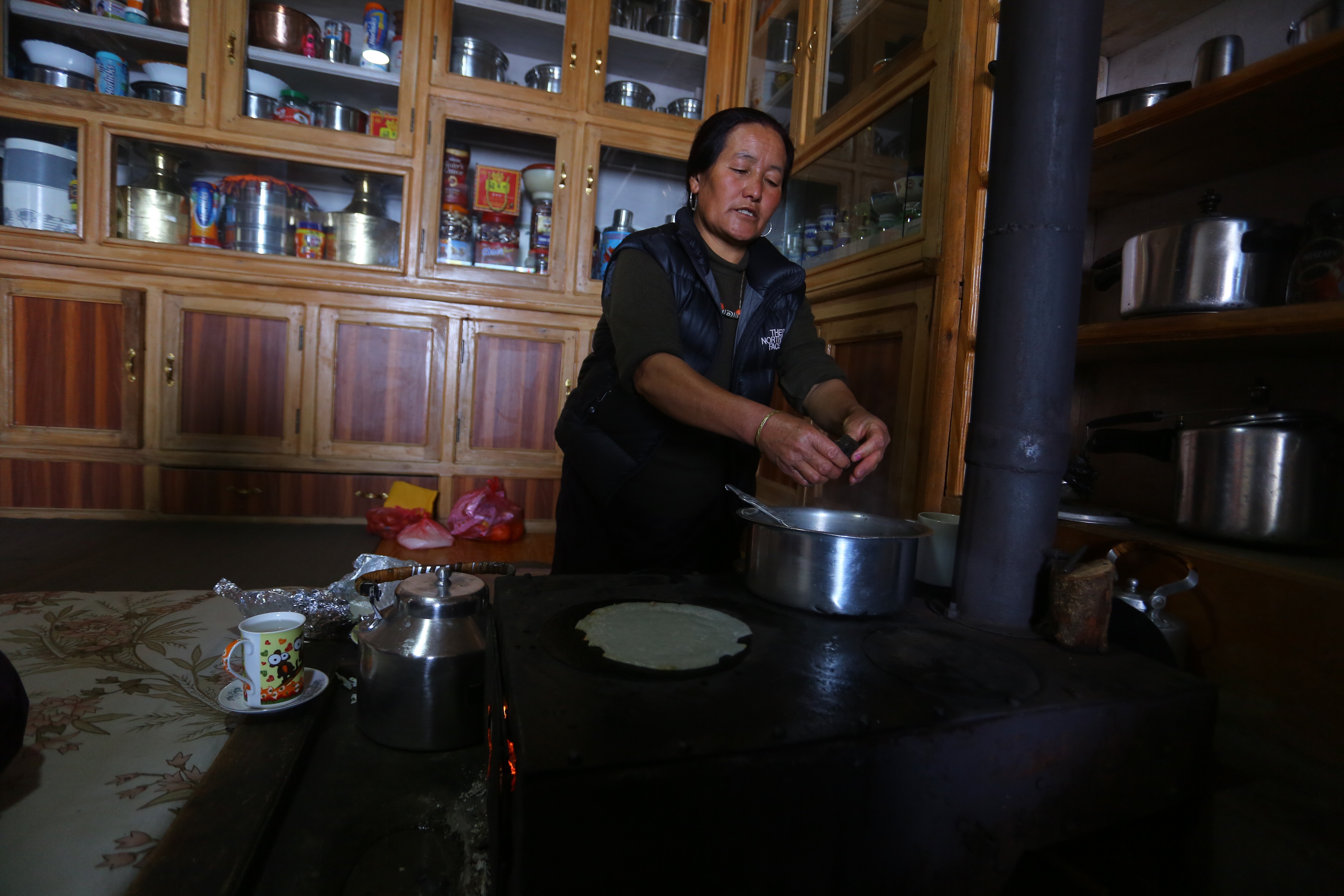Helambu's genuine hospitality: tea culture and household cleanliness

By Kshitiz Siwakoti, Sindhupalchok, Mar. 4: Tea culture and household cleanliness may be the lesser-known aspects of the hospitality of Helambu which are locally bred and wrap the guests with an aura of genuineness. For this and many other reasons, Helambu's hospitality stands apart from the mainstream.
The generous hospitality of the Hyolmos is best exemplified in their kitchens. A traditional Hyolmo kitchen consists of a low-lying dining table where people sit on cushions surrounding it rather than on chairs as it provides a feeling of closeness. To enhance the warmth in the atmosphere the kitchens in Helambu use a traditional fire stove known as Tandruk which keeps burning during the mealtime.
A common characteristic feature of all Hyolmo homes is that from the utensils to the entire home, everything is spick and span.
Patolma Hyolmo, a resident of Sermathang, Helambu, explained the importance of household cleanliness in Hyolmo culture. “When we were getting married, one of the criteria my in-laws considered was the cleanliness of our home. You will find that all Hyolmo homes are kept very clean.”
A clean residence is the embodiment of good hospitality and the Hyolmos have always had this in their tradition.
Another important characteristic of the houses in Helambu is that the size of their kitchens is as generous as their hospitality. They are relatively large as compared to the other rooms in the home. According to Kesang Lama, a resident of Sermathang, Helambu, the kitchen has to be large as the Hyolmos have to accommodate a large number of guests at once, so their needs have to be met. “We also believe in feeding a lot of food to our guests,” Lama said.
“Our kitchens are large because it is the only place in the home where we share all our joys and sadness,” Lama said. The generous size of the kitchen and their food will definitely leave the guests enamoured by the hospitality of Helambu.
Along with their unique hospitality, the tea culture of the Hyolmos is also unique. The tea in Helambu is different from the tea that we are all used to. It is not sweet but rather salty. The tea is brewed by mixing and churning milk with butter and salt.
Traditionally the tea used to be brewed by mixing and churning milk with butter and salt in a Dhungma. The Dhungma is a tall cylindrical bamboo container where the person would push down a wooden disc by holding a stick attached to it through the open end of the container. However, now, due to modernization, the villagers use a mixer although most homes in Helambu still have the Dhungma.
In the morning for breakfast or while welcoming a guest this warm beverage along with crispy Khapse is something a person can expect. The tea is definitely the locals’ favourite beverage as this is something a lot of the villagers drink very frequently. The tea is mostly served in a fine China bowl.
There have been many speculations as to how this tea culture came into existence. Many of the villagers believe that this culture could have been imported from Tibet. According to many villagers they are of the opinion that sugar used to be expensive a long time back and Tibetan salt was cheap. Perhaps this could have been the reason why salty tea stuck with the people of Helambu.
The politeness of the villagers along with tea and kitchen culture has been inextricably woven into the fabric of rare hospitality that only feels genuine to the core. Helambu, a much-unexplored area of Nepal, could serve as a model of hospitality that is simple and genuine.

Photos by: Manoj Ratna Shahi/TRN Online
Recent News

Do not make expressions casting dout on election: EC
14 Apr, 2022
CM Bhatta says may New Year 2079 BS inspire positive thinking
14 Apr, 2022
Three new cases, 44 recoveries in 24 hours
14 Apr, 2022
689 climbers of 84 teams so far acquire permits for climbing various peaks this spring season
14 Apr, 2022
How the rising cost of living crisis is impacting Nepal
14 Apr, 2022
US military confirms an interstellar meteor collided with Earth
14 Apr, 2022
Valneva Covid vaccine approved for use in UK
14 Apr, 2022
Chair Prachanda highlights need of unity among Maoist, Communist forces
14 Apr, 2022
Ranbir Kapoor and Alia Bhatt: Bollywood toasts star couple on wedding
14 Apr, 2022
President Bhandari confers decorations (Photo Feature)
14 Apr, 2022












